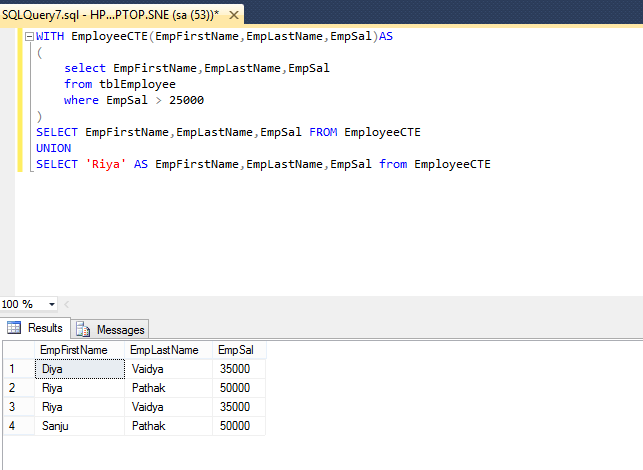Delete From Cte Sql Server
Delete From Cte Sql Server. (cte) to delete the rows from a sql table as well. You can also use a cte in a create a view, as part of the view's select query.

To delete duplicates, you simply need to delete from the cte where rownum is greater than 1: Sql server first gets the rows that satisfy the select statement and then removes those rows from the [orders] table using the sql delete statement. The placeholder is where we will do our actual execution and reference the cte.
Delete Duplicate Rows In Sql Server Using Cte.
Delete duplicate rows in sql server using row_number. For an example of an insert with common table expressions, in the below query, we see an insert occur to the table, reportoldestalmondaverages, with the table being created through the select statement (and dropped before if it exists). Or the same operation, using a cte:
Delete Dupl From ( Select Row_Number() Over (Partition By A Order By B) As Duplicate From #Table) As Dupl Where Duplicate>1;
And c.lastname like 'williams') ) delete from customercte; Integrated security=sspi').adventureworks2012.humanresources.department where departmentid = 17; Common table expression (cte) was introduced in the sql server 2005 and it is a temporary named result set.
We Can Define This Sql Server Cte Within The Execution Scope Of A.
While developing sql server objects, we should adhere to specific best practices, which will eventually help to maintain data integrity and better performance. Select * from cte where rn > 1. ;with chargestodelete (id, ciid) as ( select c.id, ci.id from @chargeids c left join xxx.dbo.chargeitems ci on ci.charge_id = c.id where ci.id is null ) delete from xxx.dbo.charges where id in (select id from chargestodelete);
Delete Duplicate Rows In Sql Server Using Rank.
Cte was introduced in sql server 2005, the common table expression (cte) is a temporary named result set that you can reference within a select, insert, update, or delete statement. To delete duplicate values, we can modify the above query by replacing select * on the last line with delete: To now delete the offending rows, change the last line from a select statement to a delete statement:
For Example A While Would Be Perfect If I Could Select The Count Of The Records In The Cte (X) That Run The Delete Statement For X/500 Records.
This is derived from a simple query and defined within the execution scope of a single select,. It is characterized by a simple query and defined within the execution scope of a single select, insert, update, delete or. Sql server first gets the rows that satisfy the select statement and then removes those rows from the [orders] table using the sql delete statement.
Post a Comment for "Delete From Cte Sql Server"